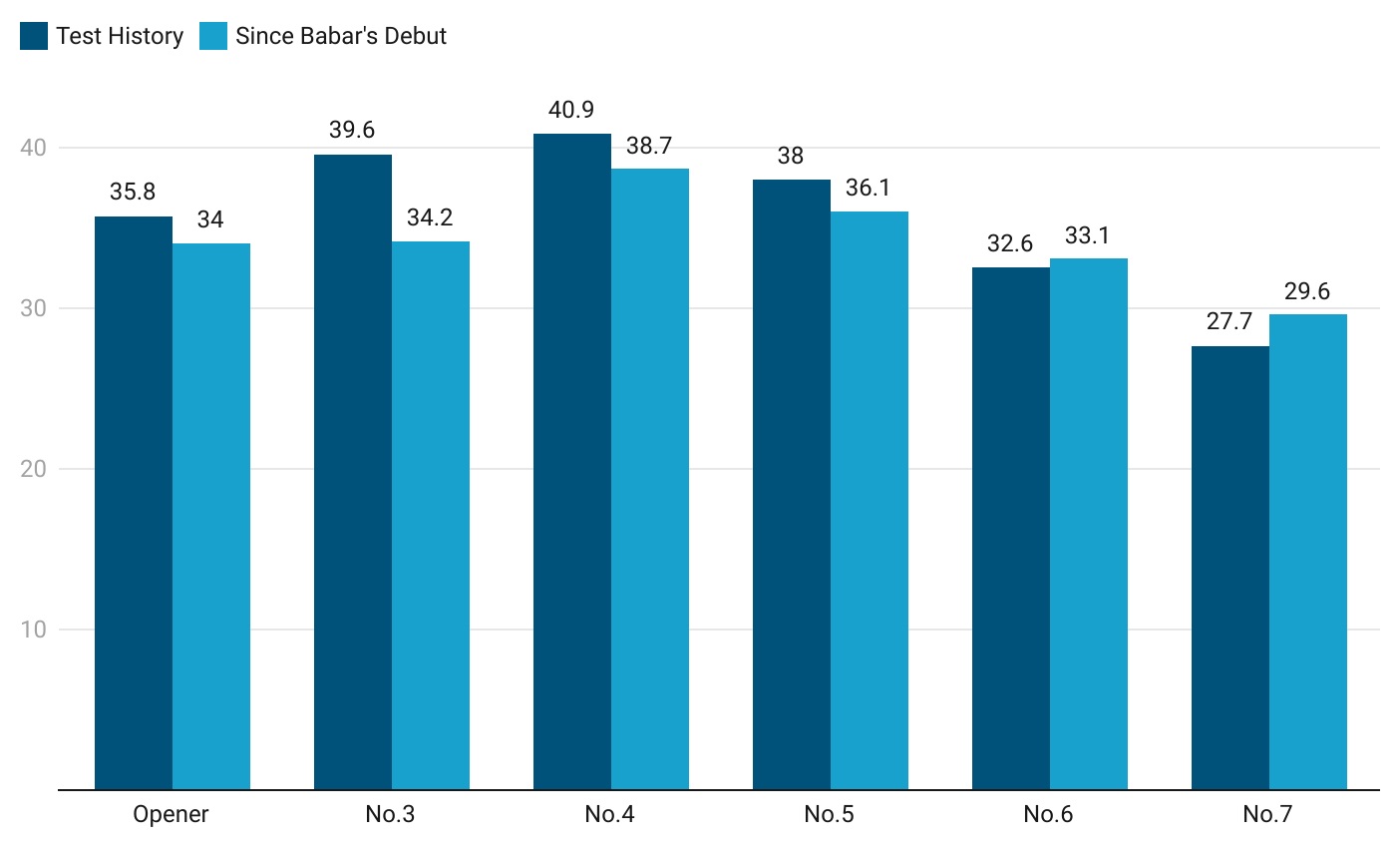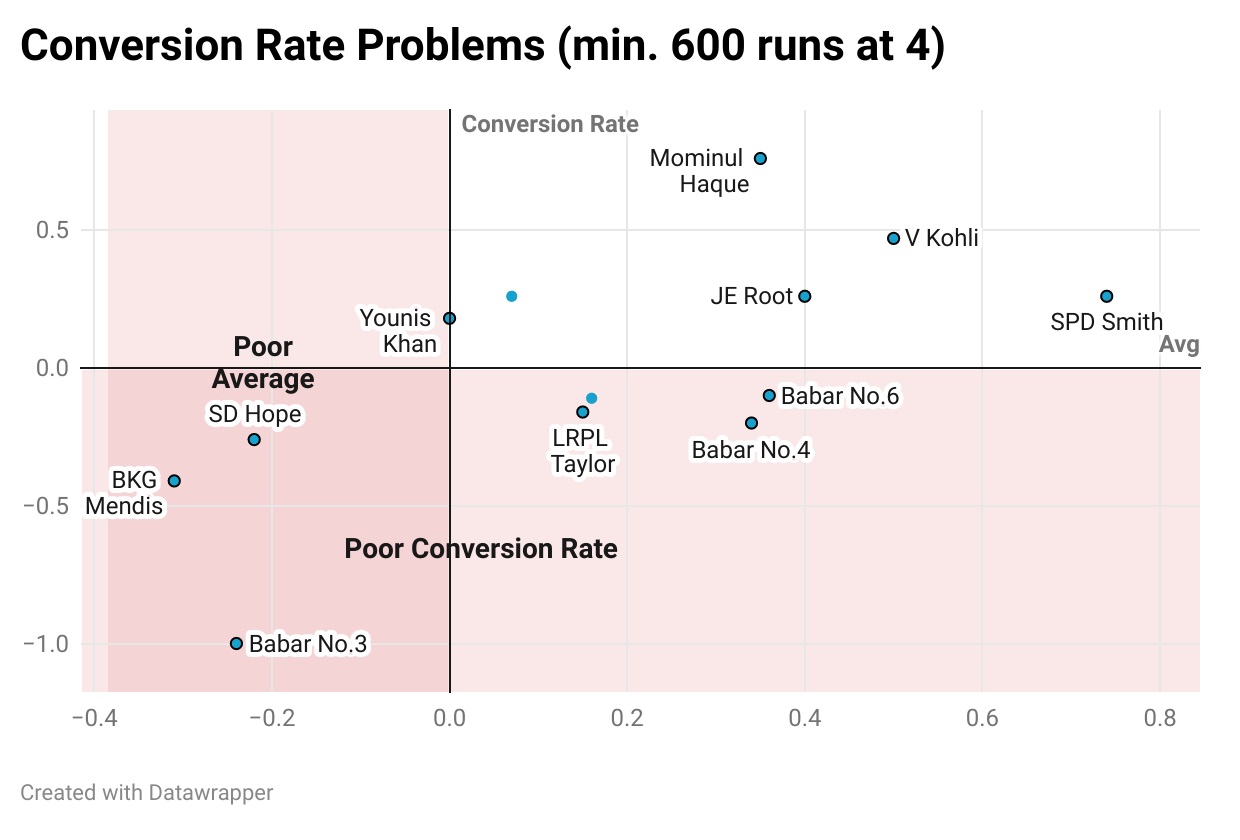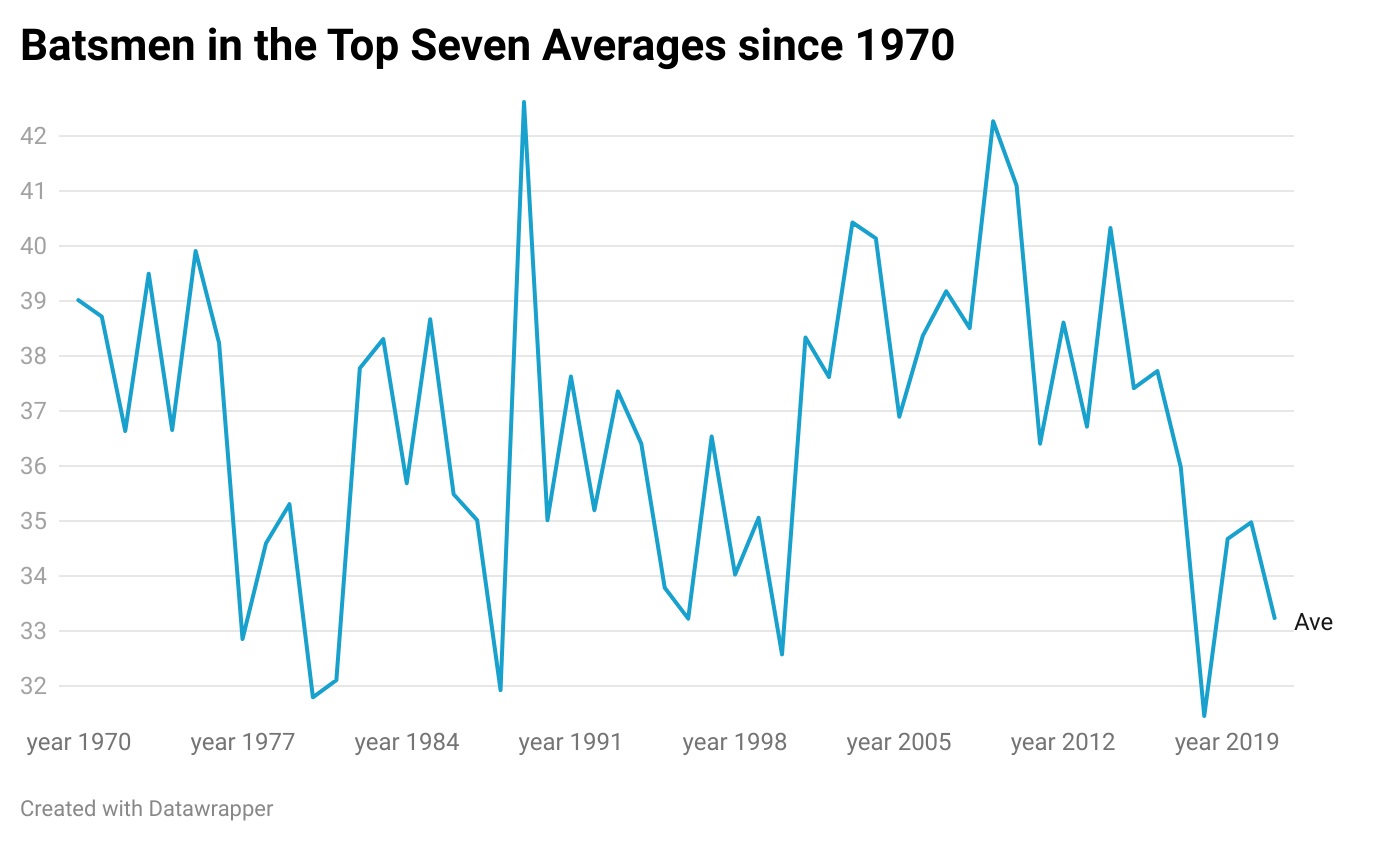
Babar Azam, the Test Batsman – What’s Up?
Thrust into Test cricket at an early age, the prodigy has seen a red-ball career with plenty of ups and downs so far.
It’s difficult to fathom now, but there was a point in time in Babar Azam’s Test career when he looked like he may not be cut out for Test cricket. “Look at his First Class numbers,” they said. Dozens of domestic performers were being frozen out of the side for a youngster who looked out of his depth. But Babar Azam has always been destined for the highest level, and after a tepid start, his Test career started to flourish.
Babar’s Test career is relatively easy to track as he goes from being a liability to a contributor and then leader. But then there has been a blip which not many can make sense of. He had done the hard yards, proven himself in all conditions, and now was the time to make hay and become the crown jewel in Pakistan’s Test batting lineup.
Batting Position
Babar was unwisely thrust into the #3 role in his initial Test years. This may have partly contributed to his torrid start. Eventually, the management took him through the normal development plan of a promising young batsman, namely starting him at #6 and then moving him up. This suited Babar as now he wasn’t as exposed to the new ball and didn’t have as much batting responsibility, resulting in him flourishing in the role enough to get promoted to #5. His time at #5-6 saw him score runs in UAE, England, South Africa, and Australia.
The #4 role in Test cricket is very interesting; it is normally where the best batsman of the lineup bats. Throughout Test history, #4 remains the most profitable batting position, with no other batting position holding a higher average. The normal Test template dictates that the openers blunt the new ball and see out the early movement even if they perish trying so that the subsequent members of the batting lineup can make hay.
The #3 has historically been an enviable position, holding the highest average after #4 but not in this era. This era (since Babar’s debut) has seen a rise in high-class Test bowlers as well as helpful pitches, reducing the #3 role to that of a third opener. Indeed since Babar’s debut, the average #3 only averages 0.12 more than the average opener. However, history and this era agree on the #4 remaining the most important batsman of the lineup.
This history lesson is all just to say that Babar was earlier batting in a position where runs were expected a few standard deviations above 35 – the mean, which he delivered, averaging 43 batting at 5 and 6. But now, with the move up to #4, the base and expectations are higher. To his credit, Babar has responded admirably and currently averages 52 batting at #4, which is what Pakistan would expect of him.
Conversion Rate
However, while averages are well and good, what Pakistan needs from its #4 are match-defining innings. Supporting knocks of 70-80 look impressive when they come at 5 or 6 but less so when they come from the man who is expected to carry on. Here, Younis Khan’s shadow looms large; Younis was Pakistan’s last regular #4 and was famous for playing just the knocks expected from a team’s main batsman. But it must be noted that Younis was awarded the important #4 role in 2010. By then, he was 33 years old and a seasoned Test veteran. Before 2010, he had only played 13 innings at #4. Babar, meanwhile, is seemingly learning on the job.
Babar’s conversion rate in all of his batting positions has been less than the average batsman in that position but more so in the #4 spot because he is still delivering the conversion output of a #5 or 6 at the crucial #4 position. This is why, although his average is above par, the magnitude of his impact on the match is dependent on who else in his team manages to stick around with him. Luckily, his batting order has been firing all cylinders recently.
Bowling Era
Ultimately, cricket discourse takes ages to change. The staple around Test averages seems to be that below 40 is poor, 40 to 45 is OK for some but not those destined for greatness, and that 50+ Test average is the most coveted. It is effectively a status symbol among Test batsmen. This all doesn’t take into account that Test batsmanship has taken a definite dip in the last five years due to superior bowling attacks and result-oriented pitches. Perhaps the hard-earned average of 42 of a batsman in this era is of more value than a batsman who averaged 45-46 in the 2000s when draws and scores of 500-600 were more likely.
Younis Khan spent most of his Test career in the 2000s, learning how to make his starts count on batsman-friendly pitches, which made him the clinical dependable #4 that led the Pakistan line up of their 2nd greatest Test side.
The Pipeline
Babar’s Test conversion rate currently sits at 21%, and his conversion rate in First Class cricket is 20%. This is mostly because Babar found himself in a First Class system that was heavily in favor of bowling and that even a particular type of bowling – medium pace. On these pitches with these balls, it was only a matter of time when you got the ball with your name on it. When entire teams only look to score 220-250 runs in total to look to make a game out of it, not many batsmen are scoring 100s. So instead of grooming Pakistan’s greatest batting talent of the 21st century, the FC system instead didn’t allow him to learn how to score big runs or lead batting lineups.
No Clear Weaknesses
There was a line in CricViz’s profile of Babar during the T20 World Cup, which would then be heavily shared over social media. The CricViz team felt Babar’s game had “no clear weaknesses,” a notion backed up by his numbers vs. every bowler type and bowling length. From 2018 onwards, Babar has been able to flourish in every condition presented to him. There is no single series that one can point to and say he looked out of his depth. In 14 series played since 2018, Babar has only averaged under 35 in two and under 30 in one.
Similarly, if we look at his splits by bowler types since 2018, he doesn’t average under 40 against any type of bowling. His prowess at playing deliveries over 140 kph has garnered wide acclaim, with CricViz usually ranking him among the best players of that type of bowling. Sure, he might struggle against medium pace deliveries regularly targeting his 4th stump, but then you are better off looking for a unicorn than a Test batsman who doesn’t struggle against those.
It Will Be Fine
Babar managed to go from being a liability in the Test batting lineup to the leader of it in the space of two years. The only thing currently holding him back is his conversion rate. As problems go, it’s a relatively easier one.
In his first 15 ODI matches, Babar had five 50s but no hundred. He then proceeded to score four 100s in his next eight and went from strength to strength. Test batsmanship is significantly harder, especially in this era, but Babar Azam has the drive and dedication to have that breakthrough moment. After that, it will be smooth sailing (well, as smooth as sailing can be in Pakistan cricket).











Leave a Reply